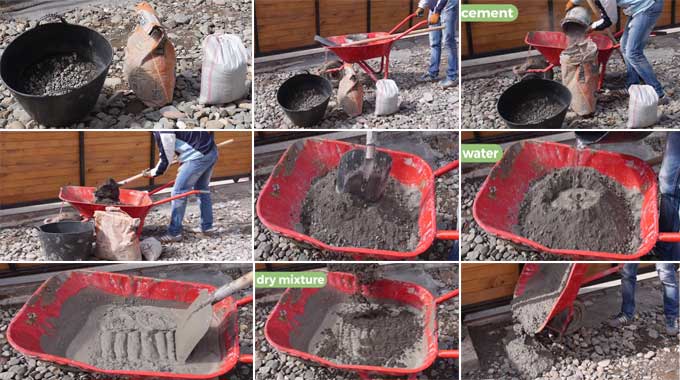
Concrete: Proper Mixing Ratio and the Tools to Help You on the Job

In the construction industry, concrete is the most widely used material. It is a mixture of cement, fine aggregate, and coarse aggregate in a controlled proportion and of suitable quality. Concrete is a man-made composite material that's the most extensively used building material in the business.
Concrete is required to complete many jobs around the house; even the smallest fixing or DIY job requires the use of concrete. These chores are all to repair gaps in concrete floors, install fence posts, and construct a sturdy footing for a birdbath, barbecue, or other outdoor elements.
The concrete will not firm up properly or have the necessary strength if it is too wet or too dry. Large concrete operations need the hiring of a concrete truck and personnel to distribute the material properly and rapidly, resulting in a smooth and level floor or surface.
In this article, we are going to discuss the steps and tools required for proper concrete mixing.
Why is Concrete Mixing Necessary?
Concrete mixing aims to create a homogenous and consistent concrete mass in terms of colour and consistency. All aggregate particles must be coated with cement paste, and all concrete elements must be mixed into a homogenous mass.
The mixing of Concrete is done either by hand or a machine known as a mixer.
Mixing of Concrete for bigger projects
Bigger projects such as new houses, shopping complexes, commercial projects, stadiums etc., require professional-level concrete.
Concrete multi-story commercial buildings and other types of commercial buildings require special expertise and equipment. These projects are usually handled by architects, project managers, and field service technicians.
Then there are concrete projects for existing properties, such as new patios or paths, new or replaced concrete driveways, or tennis courts. These projects necessitate the use of truckloads of ready-mixed concrete, which professionals must place.
Concrete is provided ready for use, i.e.'ready mixed' to the requisite specifications, to huge construction sites. Several elements, including determining concrete's strength and character.
Work Type (its purpose)
The Intended working life (its durability)
Reinforcement of the concrete
The underlying risk of a chemical attack
Pouring method
Concrete for the smaller projects
Certain small projects are required to be tackled by the homeowner; some of them might also require thirty bags of concrete. In certain cases, premixed cement is delivered in a concerning truck. However, the smaller projects by correlating with the hand mixer happen to be much more successful in case the mixer is properly mixed.
The correct equipment is required for the proper cement mixing and a few following mixing steps.
Steps for mixing concrete
1. Make sure you have the right tools and concrete mix. You'll need a bucket, a cement mixing tub or wheelbarrow, clean water, a dust mask, goggles, rubber gloves, a hoe or other mixing tools, and a stiff-bristle brush.
2. Before opening a bag of concrete, place it in a tub or wheelbarrow for mixing. Slice the bag open with a hoe and then pull it out.
3. You should leave the concrete at one end of the container and add a small amount of water to the other. Be sure to reserve small amounts of both concrete mix and water to adjust later. Concrete that is overly muddy or unworkable results from too much or too little water. Always check the water amount listed on the bag's instructions.
To learn more, watch the following video tutorial.
Video Source: Howcast
4. Pull small quantities of dry concrete into the water with the hoe, mixing it into the water thoroughly until it is completely dissolved. Pour the concrete into a dry mix and mix to a smooth texture. Do a slump testfor correct consistency, and then add dry mix or water as necessary. Then mix up the concrete until you finally have a smooth and mouldable mixture without any puddles of water.
5. After cleaning the mixing tools or soaking them in water, you are ready to pour the concrete into the designated area. Then clean up the tub or wheelbarrow as soon as the work is done because once the concrete hardens, it will be difficult to remove.
Conclusion
To get the best concrete quality, mixing concrete ingredients is of utmost importance. Hand mixing is used for small projects. Machine mixing or RMC is used for mass concreting. When mixing concrete ingredients properly, the desired outcome is achieved.
A well-mixed concrete is required for both fresh and hardened concrete to meet the desired workability and performance requirements.


